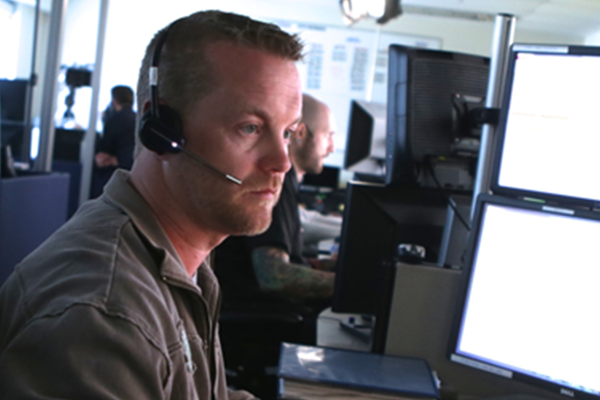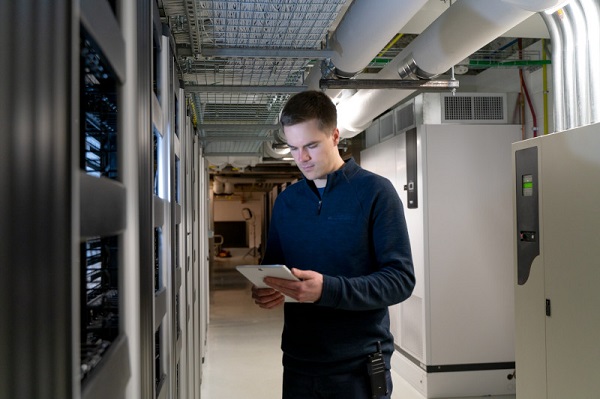As a safety professional, you believe in helping make the world a safer place for the people in your community today and in the future. But that doesn’t magically happen. Such a feat requires the right people and the right tools, all working together seamlessly in a way that makes sense to both the individual user and the team’s overall workflows. That only happens when the right people behind the scenes make solutions that augment human and team behaviors instead of adding to an already stressful job. That’s why it’s important to consider the advantages of human-centered design.
What is Human-Centered Design?
Although many people think of design — if they think about design at all — as the final output in a product, human-centered design (HCD) is actually the process that a research team takes to observe the user, understand the underlying problems they face and then provide a solution based on that research. The most successful human-centered design initiatives involve immersive field research, or capturing human behaviors and cognitive processes as they happen in the context of the situations they typically occur in. This allows researchers to “see” a potential problem or inefficiency that might be difficult for a user to explain in their own words. Fundamentally, human-centered design is never “done.” After designs are developed and deployed, the observational process starts all over again to ensure that the products keep meeting the right needs.
Why Should Public Safety Care About the Advantages of Human-Centered Design?
Both in the workplace and in our personal lives, the pace of change and the impact of new technologies can be overwhelming. This is a particular concern for public safety users, because the consequences of the work they do is so impactful – in some cases, literally life or death. To deliver new innovations for public safety, the insightful, ongoing process of human-centered design is the best way to minimize risk and speed adoption. The fundamental human-centered design concepts of observation, understanding and continual improvement provide public safety agencies with the service and support they need to serve and support their communities as their teams, and the challenges they face, continue to evolve.
In addition to the serious consequences, there are several additional aspects of public safety work that demand human-centered design for optimal efficiency. These include:
The Team Environment
Many public safety professionals work within a team environment. This means that what they do and how they use the tools at their disposal does not simply impact their own workflow, it also directly impacts their entire team as well, not to mention the indirect impact it can have on the community members they serve. Having the latest, greatest technology will not matter in the moment if it doesn’t work WITH a user in the context of their situation.
April Starr, Director of Experience Research at Motorola Solutions says that she has worked on a design team in multiple industries throughout her career, but public safety has been the most rewarding and also the most challenging by far.
“Public safety teams work collaboratively, so it’s not enough to just understand and design for a singular end-user. These teams adapt as incidents evolve, and we need to build design solutions that are as flexible as they are.”
A human-centered design approach ensures the creators behind a solution are investing the time to look at each problem holistically and not take anything at face value. Diving deeper into the complex workflows that often accompany the work at both the agency and out in the field helps researchers understand the context surrounding each user and how the team interacts as a full unit.
High-Velocity Human Factors (HVHF)
Another advantage of human-centered design is to ensure that personnel have a high-performing tool that can match the high-stress, high-velocity, high-impact circumstances that are simply part of a public safety job. The kind of tools that meet this standard are not created by default. They take the right team and the right effort, starting from the very first brainstorm.
High-velocity human factors, a term originally coined by Motorola Solutions, is used throughout the industry to describe the study of human performance in mission critical domains (such as law enforcement or military) during critical or peak moments on the job. The non-equilibrium feeling that accompanies a potentially dangerous or uncertain situation is nothing new to the everyday heroes in public safety. But it can be hard for outside individuals to truly understand. That’s why a human-centered research team approaches customer challenges with curiosity and humility because they know that these high-stress circumstances are (most often) not ones they have ever experienced themselves and they desperately need the insights from those who experience them on a regular basis.
Instead of telling customers what they need, human-centered researchers work alongside them, immersing themselves in the context of the situation to discover gaps and hidden complexities that would be hard to find on their own. They also have a deeper understanding of how these high-velocity human factors can (and should) change the design of a product to reduce cognitive load during critical moments when stakes are high and time is short. Devices and solutions that take advantage of human-centered design are purposefully built to accommodate challenging environments and naturally present only the most pertinent information in a highly accessible manner.
The Training Process
Products that simplify the job to be done and augment the user experience are not only beneficial during critical moments. They also make it easier for public safety teams to quickly learn new solutions and pick up new capabilities because the applications reduce the learning curve by using an intuitive design that simplifies accomplishing the desired task. This is another advantage of human-centered design and is especially helpful in public safety when personnel are constantly charged to extract insights from huge amounts of data while also maintaining greater situational awareness.
As a researcher who has spent countless hours with users in agencies across the country, Starr says that the importance of a simpler training process can not be overstated.
“Leveraging a human-centered design approach to building our products helps us increase the intuitiveness of our products and thus lessens the need for as much product-specific training.”
As a public safety professional, you require technology with a purposeful approach in its product design and innovation. The more tools that enter the scene to help you do your job, the more critical the right design becomes. Because human-centered design is more than just user experience or button placement. It’s how we’ll create a safer world.
At Motorola Solutions, we believe the power of great design can truly keep people safer. Which is why human-centered design is more than just a hashtag for us. It’s integral to everything we are and everything we do, from our outside-in approach we use in research to the innovative solutions we build for the critical moments our customers face.
Learn more about how our products and software are a direct result of our human-centered design process.




